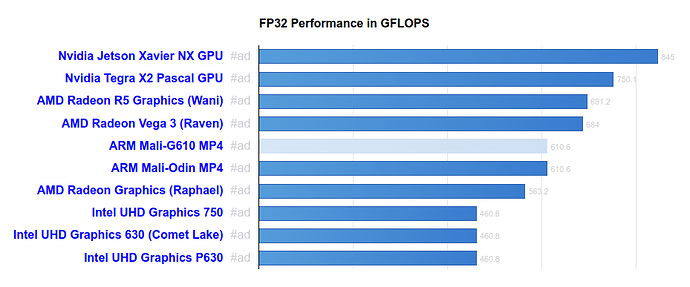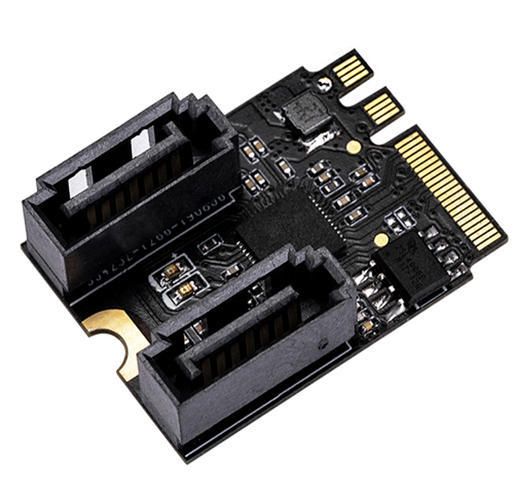Hello,
Im very interested in ROCK 5, because it has so powerful CPU, 2.5 Gbit network and its ARM-based, so Im thinking about building NAS.
I was looking for competition like Synology or Asustor, and new NAS servers by Synology and Asustor for home uses Intel Celeron J4125 which has Passmark rating around 3000, then I checked Rockchip 3588 (which ROCK B uses) and it has Passmark rating around 6000, so ROCK B’s CPU should be around 2 times faster than Intel Celeron J4125 which uses competition, but even if it had same performance I would take Rockchip again because its ARM, so it has low power usage too.
So CPU performance should not be a problem, I just have some issues and Im looking for answers here so:
1. Can ROCK 5 B support somehow at least 2 (ideally 4 --> for future) SATA III ports? Like using some SATA III Hat? I was that ROCK 4 has something like that, side question: that Hat uses GPIOs right? Is it reliable to use it for SATA interface? 
Note: I would like to use m.2 slot on the back of SBC for OS and SSD Cache, so don’t recommend me m.2 to SATA adapters please.
2. I saw that SATA Hat for ROCK 4 needs external power (through MOLEX) to power 3.5 inch drives, is there some adapter or solution to power ROCK 5 B and these SATA drives using one single adapter, so I don’t want to have 2 separate adapters in electric plug, one for ROCK 5 B and second for SATA drives.
3. Is there any I/O shield for ROCK 5 B? If I wanted to mount it into mini-ITX case.
4. Is ROCK 5 B’s hardware (CPU, Ethernet, etc…) supported by solutions like unRAID, TrueNAS or Xpenology?
5. What is support of GPU hardware acceleration? --> I would like to use PLEX, and if you play video on unsupported device then PLEX have to transcode it in real time, I heard that it has really big performance impact (some staff on Reddit said that it needs around 2000 Passmark CPU for every 1080p stream which is transcoded, can be found here: https://www.reddit.com/r/PleX/comments/5miq8s/top_10_plex_myths_debunked_6_will_blow_your_mind/ its Myth number 8)
Note: I found that some Asustor NAS uses Realtek RTD1295 CPU, and this CPU has ARM® Cortex-A53 and ARM® Mali-T820 MP3 GPU, and ROCK 5 B uses much better CPU and even GPU is much much better on ROCK 5 B as you can see on screenshot below what I found, so point is that Asustor provide PLEX too, so I guess that Mali GPU inside Realtek is supported in PLEX, so is Mali G610MP4 in ROCK 5 B supported as well?






